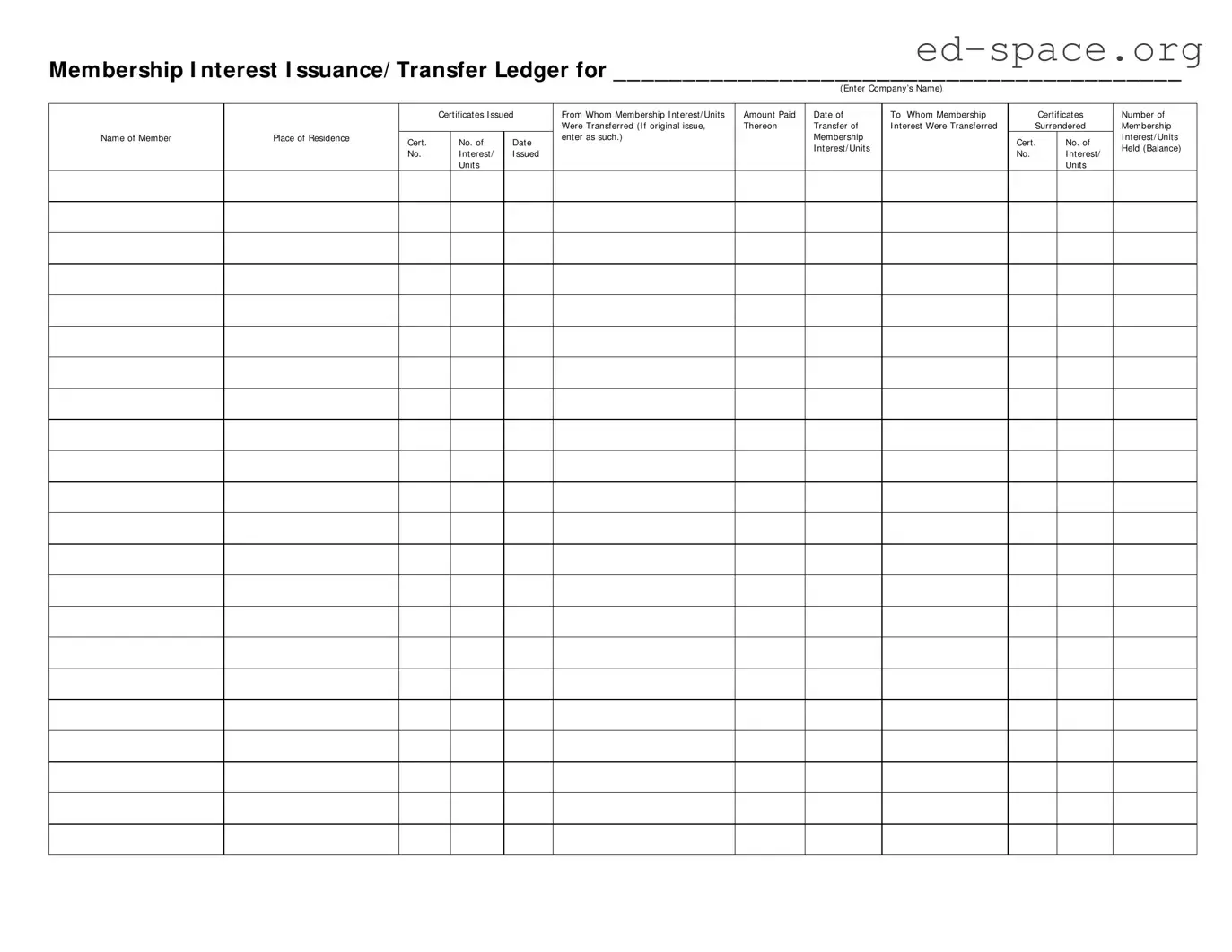What is the purpose of a Membership Ledger form?
The purpose of the Membership Ledger form is to systematically record all issuances and transfers of membership interests or units within a company. This crucial document serves as an official record, tracking who owns how much of the company at any given time. It includes detailed information about each transaction, such as the date, the parties involved, the amount paid, and the number of units or interests transferred. This ensures transparency and accuracy in the ownership structure of the company.
What information is required on the Membership Ledger form?
When filling out the Membership Ledger form, several key pieces of information are required: the name of the company, details of the certificates issued (if applicable), the names and places of residence of current and former members involved in a transaction, the amount paid for the membership interest, the date of the transaction, and a comprehensive record of how many units or interests are transferred from one member to another. Additionally, it must indicate the total number of membership interests or units held by each member after the transaction is completed.
How do I issue new membership interests using the Membership Ledger form?
To issue new membership interests, you should complete the relevant sections of the Membership Ledger form by indicating it as an original issue. This involves entering the date of issuance, the name of the member who is receiving the interests, their place of residence, the number of interests or units issued, and the amount paid for these interests. By documenting this transaction in the ledger, you update the company's ownership records accurately.
What is the process for transferring membership interests as recorded on this form?
The process for transferring membership interests involves documenting the transfer details on the Membership Ledger form. This includes noting from whom the membership interests are being transferred, to whom they are being transferred, the date of the transfer, and the number of units or interests transferred. If the transfer involves the surrender of certificates, the details of these certificates are also recorded. This process ensures that the company's records accurately reflect the current membership interest holders and their respective ownership percentages.
Can this form be used for any type of company?
While the Membership Ledger form is specifically designed for entities that issue membership interests, such as limited liability companies (LLCs), it may not be suitable for all types of companies. For example, corporations, which issue stock rather than membership interests, generally use a Stock Ledger for similar purposes. Therefore, the applicability of this form depends on the company's legal structure and the nature of its ownership units.
How often should the Membership Ledger be updated?
The Membership Ledger should be updated immediately following any transaction that alters the ownership structure of the company, such as the issuance of new membership interests or the transfer of existing ones. Promptly updating this ledger ensures that the company's records accurately reflect its current members and their respective ownership stakes. Regular maintenance and updating of the ledger are crucial for managing the company's affairs effectively and for compliance with relevant laws and regulations.

